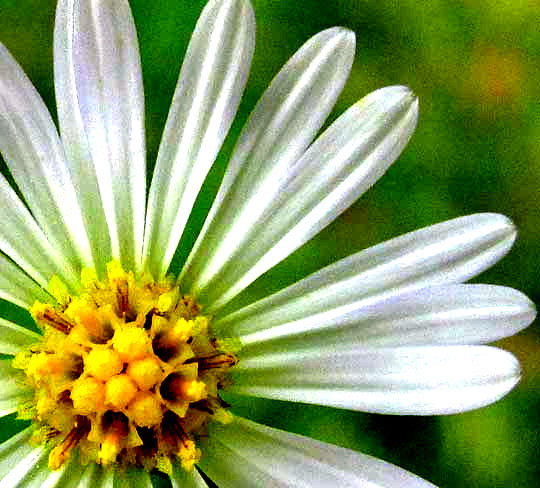
Even the most familiar flowers are doing extraordinary things. For example, the Saltmarsh Aster at the right, Symphyotrichum subulatum, is just one of about 23,000 species of the Aster or Composite Family, of which this is true: What's seen at the right isn't a flower, but rather a flowering head composed of many tiny individual flowers, called florets. In this species, tiny, yellow disc florets cluster to form the aster's "eye," while long, white, petal-like ray florets radiate from around the eye. Each disc and ray floret produces its own small, one-seeded, cypsela-type fruit. All members of the Aster produce such disc and/or ray flowers.
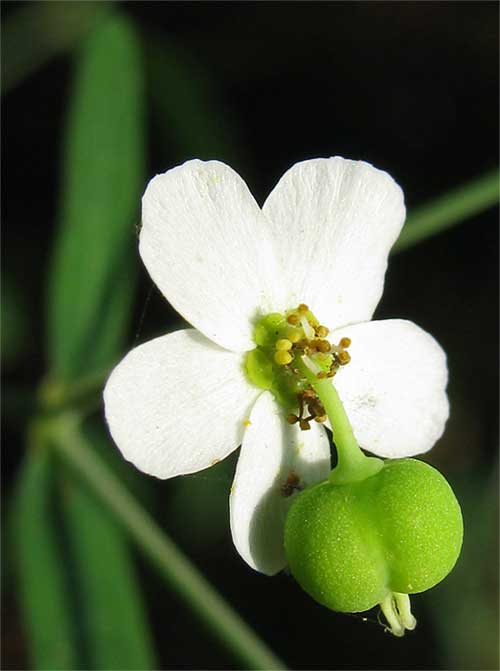
In different ways, other plant groups take advantage of the Aster family's obviously successful strategy of cramming tiny flowers into a head so that all together they look like one flower. At the left, the "eye" of a spurge flower, Euphorbia pubentissima, comprises a cup-like depression in which several much-reduced male flowers with only one stamen each are crammed around a single female flower. However, there's not enough room for the female's big ovary inside the crowded cup, so the green, three-lobed ovary hangs outside it, on a long, bent stem. This strategy pays off by making the genus Euphorbia one of the two or three most species-rich genera of flowering plants worldwide!
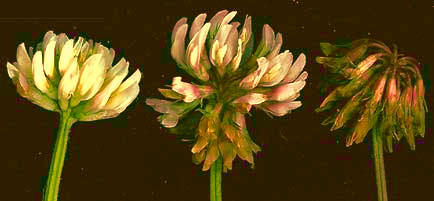
At the right you see three heads of the abundant, often weedy White Clover, Trifolium repens. In that picture, the head on the left is composed of immature and freshly opened flowers needing to be pollinated; most flowers in the head at the middle need pollination, and; flowers in the head at the right already have been pollinated. Note that flowers needing pollination are tilted upward for easy access to pollinators, and are brighter in color than those already pollinated, which now point downward. Also, older flowers are slightly pinkish. Since bees can't see red, the pink flush of pollinated flowers causes them to appear even darker to bees. Clovers help their pollinators all they can.
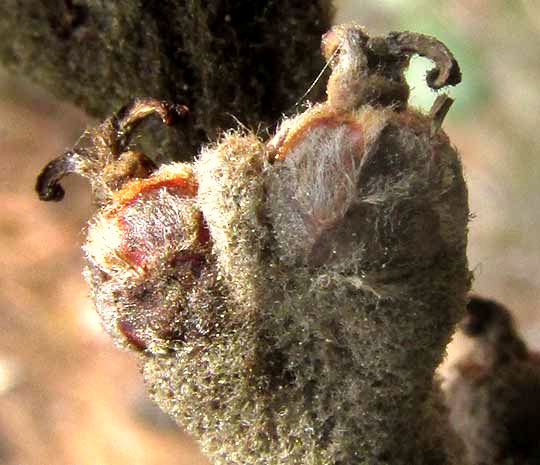
Oak trees arrange male flowers in conspicuous, long, dangling, yellow, worm-like heads known as catkins. The female flowers, such as those of the Netleaf White Oak, Quercus polymorpha, shown at the left, often are hard to find, nestled in the shadowy angles where leaf petioles connect with the stem. The picture shows two female flowers topped by three curved-back stigmas, ready to receive pollen. At each flower's base there are the beginnings of the "cup" that eventually will cover the bottom of the oak's acorn-type fruit.
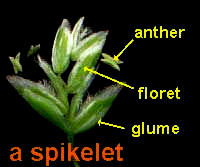
At the right, a spikelet of Annual Bluegrass, Poa annua, shows the basic flowering structure peculiar to all flowers in the Grass Family. As with the huge Aster Family, the actual fruit-producing flowers are called florets. However, in grasses, florets are organized into spikelets, and a spikelet may contain only one to hundreds of florets. This spikelet-based arrangement is featured in all the 11,000 or so grass species, but each of those 11,000 species varies its expression of the strategy in some small to great way.
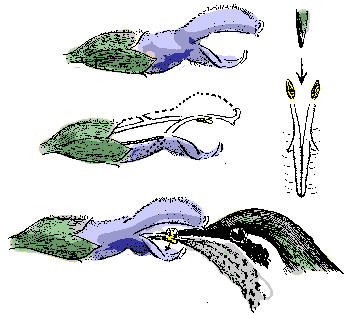
Many sage flowers, genus Salvia have two lever-like stamens modified in such a way that when a bird beak or insect pollinator pushes into the corolla, the lever is nudged. This nudge causes the stamens to bend downward, daubing the pollinator with pollen, as shown at the left, with a hummingbird.
Actually, all flowers, if you pay enough attention to them, eventually display remarkable features exquisitely adapting them just to the ecological niche they occupy, and always with the goal of accomplishing reproduction.
That this absolutely necessary function for all living things is done in such a pleasing manner... is something worth meditating on.
S